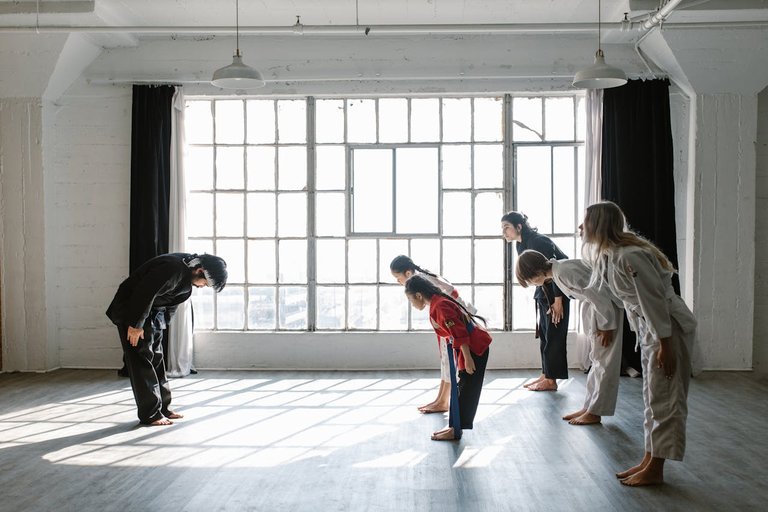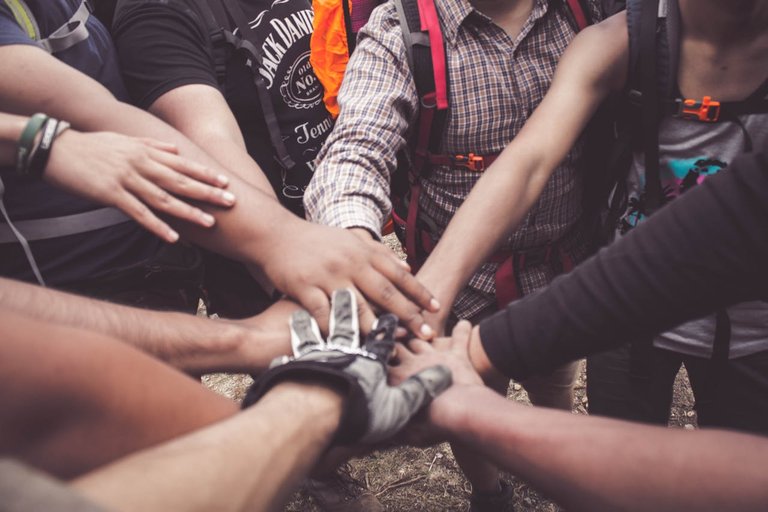The modern, western martial arts school isn’t necessarily the best place to learn martial arts. The criticisms of McDojos aside, there are a number of downsides to learning martial arts or self defense in a typical martial arts school environment. These negatives are particularly problematic for certain marginalized people, such as those who are queer or neurodivergent.
In no particular order, these problems are:
- High cost of tuition. This can make training inaccessible to many people.
- Typically, a blind loyalty to a given teacher or martial arts style.
- A "we do it all" approach to marketing that doesn't serve a person with very specific needs.

Image source: Pexels.com
There are many reasons why a person might practice martial arts. But at the end of the day there is one driving factor to how a martial arts school is run, profit. The profit motive isn’t always in line with what’s best for a student. And I say this as someone who has previously taught tai chi and iaido as paid offerings at the gym I used to own.
So, what is a better organizational structure for a martial arts school?
I’ve given this question a lot of thought as I’ve taken a few years off of teaching to reconcile how to provide the best training possible while also putting food on my table and honoring my own anti-capitalist values.
While I haven’t solved the food conundrum, I keep coming back to the idea of a co-op or an anarchist collective as being an ideal set up for learning martial arts. So, let’s look at some of the defining features of an anarchist collective, and how they benefit the martial artist.
Decentralization
In a typical martial arts school, there is an owner and the brick and mortar location for training. Sometimes the owner may have multiple locations each run by different managers who may or may not be competent martial artists.
This centralization of authority and a heirarchical business structure simultaneously creates a vulnerability in a student’s training path. Should the owner go out of business or suffer some other personal issue, the whole school is affected.
In the case of many neurodivergent people, a rigid heirarchy of authority is difficult to thrive in. Autistic people, such as myself, have trouble showing the expected loyalty and devotion to a teacher just because they are the teacher, or by virtue of their lineage. The heirarchy is reinforced both in business structure and in the belt ranking system.
So, in a school that has a decentralized ownership, such as a co-op and has no hierarchical structure of, say, sensei > sempai > student, a neurodivergent person can thrive and freely explore the martial art they’re learning.
Voluntary
Participation in a collective or co-op must be voluntary. And this is important. The schedule a person can maintain may change from time to time. And if the expectation for maintaining good standing as a student is 3 classes per week attendance, then this puts stress on the person who may need to train more times per week than their membership level allows, or less than is required. There can be many reasons for these fluctuating needs, from health issues to work schedules and family obligations. But this fluctuation is valid in any case.
It may seem at face value like any participation in a martial arts school is voluntary, but is that true? If there are certain participation requirements, such as sparring or tournament participation, for advancment in the curriculum, is it truly voluntary? On a given day of training if it’s required to engage in sparring or another activity that someone may not be well enough for, is it voluntary? If a contract for monthly membership payments for a given time is enforced, is the participation voluntary? No.
A person has to have the autonomy to opt in or out of a given activity for any reason at all. And if that’s not the case, the training isn’t voluntary.
Mutual Aid
The goal of most anarchist collectives is to provide mutual aid. What does that look like in a martial arts context?

Image source: Pexels.com
This could look like something as simple as a well organized car-pool set up to get everyone to training. Or in the case of folks training for self defense, it could be the availability of someone who has been training to fight along side you for a while to be by your side should you need to put yourself in an environment that could be unsafe.
This goes beyond the “friendships” created at a commercial dojo. Of course people help out each other who are in their social circle. But in a collective environment there is a common goal of supporting your community as a fundamental reason for the organization to exist. Again, the reason for a commercial dojo to exist is profit. That is a true statement regardless of the moral compass of the owner of a given dojo.
Invariably, training incurs costs. These costs can be mitigated in many ways, such as purchasing used safety equipment or DIY equipment when possible and training in public spaces where available. Decentralization helps with this. But in cases where training may be free or by donation, and costs have been cut, there may still be financial barriers to someone excelling in their practice. Community minded anarchists step up in these instances to provide help where it’s needed.
But wait, there’s more:
Anarchist collectives and co-ops intentionally engage in community building and community outreach. Whether one’s goal for training martial arts is personal protection, health and fitness, or social well being, a strong community makes achieving those goals much more likely.
Support and accountability are terms that are tossed around carelessly in commercial gyms and dojos. But they serve the profit motive of the business rather than the progress of the student.
Support and accountability are baked in to the idea of an enthusiastic and consenting group of individuals focused on the health, well being, and safety of the group and individual alike.
Compared to the competitive and individualistic atmosphere of many commercial dojos, the anarchist collective better provides for the needs of many students. Queer, neurodivergent, and other marginalized people in particular may find that they thrive in such an environment.